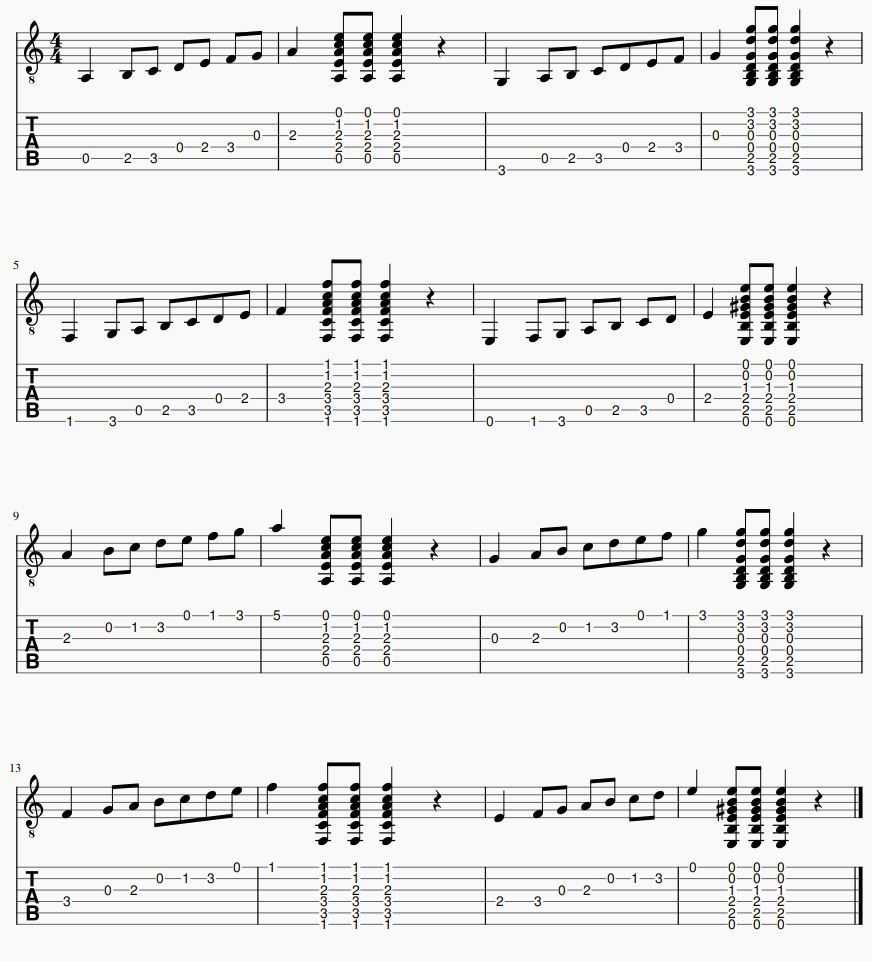
By. Sebastian Gomez
Most people when they think of guitar they imagine two different things: shredding solos, or fast Spanish style acoustic!
Today’s we’re looking at the latter, and the 3 building blocks that’ll put you on the path to fast Flamenco playing!
If you haven’t read my post on the P.i.m.a. naming, check that out and come back!
Let’s begin.
1. Andalusian Cadence
This is probably the MOST popular guitar chord progression. It’s been used in rock music, movies, cartoons; it’s… everywhere. It’s a sound that comes from the southern part of Spain, the same region that gave it the name: Andalusia.
So what does it sound like? Try playing the 4 chords in order:
Am – G – F – E
or these
Em – D – C – B
If you’re still learning your chords, then try playing these 4 Frets on the Low E string:
5 – 3 – 2 – 1
Sounds great, right?
Looking for a moment at the theory behind this, it’s the sound you get when you play the chords in a major scale starting on the minor 6th chord (iv)
iv – V – IV – III
lowercase roman numeral for minor (iv), and uppercase for major (V)
Another way to imagine it is by playing a minor scale starting from the i chord:
i – VII – VI – V
Don’t let the theory scare you! Good news is you don’t have to understand how it works to enjoy it Give the chords a shot, and listen to these famous songs for some inspirations:
- Hit The Road Jack by Ray Charles
- Walk Don’t Run by The Ventures
- Babe, I’m Gonna Leave You by Led Zeppelin
- Sultans of Swing by Dire Straights
- Smooth Criminal by Michael Jackson
- Entre Dos Aguas by Paco de Lucia(the link is bellow)
Watch the Masterclass video bellow for some extra variations on the Andalusian cadence.
2. Malagueña
If you’ve heard any Spanish guitar song it’s this one. Type the name into YouTube and you’ll find hundreds of covers and versions by different artists and composers.
Not only is it a beautiful piece, it is one of the best songs to learn with. It’s great to get your thumb moving, learn to alternate pick with your index and middle fingers, and also to start moving vertically across the strings.
Try reading the tabs and sheet music bellow to hear how it sounds.

3. Phrygian Mode
The Phrygian mode is one of my favorites. It’s exciting to play, it’s mysterious, its eerie.
Let’s demystify it a bit though.
It’s what we get when we play a scale from it’s third note, for example if we play a C Major scale, starting on E :
Instead of this: C – D – E – F – G – A – B – C
1 – 2 – 3 – 4 – 5 – 6 – 7 – 8
We’ll play this: E – F – G – A – B – C – D – E
The sound is just … cool!
Below you have the tabs for the mode, but also the notes. Try saying the notes written above out loud as you play. Practice that 4 or 5 times,

Now lets put all that we learned together! We’re going to combine the Andalusian cadence and the Phrygian mode used in Malagueña into one exercise.

Sign up for a free lesson with me!
